Podcast: Play in new window | Download (Duration: 15:12 — 15.2MB)
This week we’re looking at some very small animals–but not animals that we think of as small. Join us for a horrendously cute episode!
Further reading:
Further listening:
Animals to the Max episode #75: The Sea Panda (vaquita)
Further watching:
The Barbados threadsnake will protecc your fingertip:
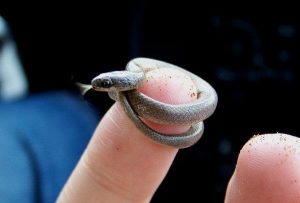
Parvulastra will decorate your thumbnail:
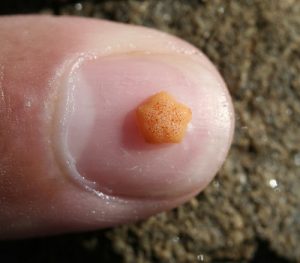
Berthe’s mouse lemur will defend this twig:
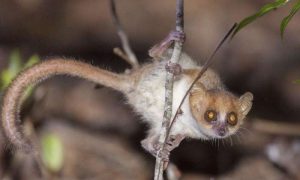
The bumblebee bat will eat any bugs that come near your finger:
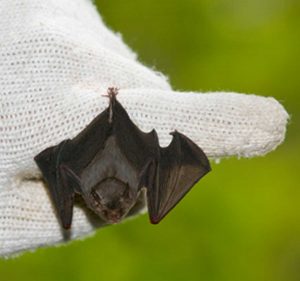
The vaquita, tiny critically endangered porpoise:
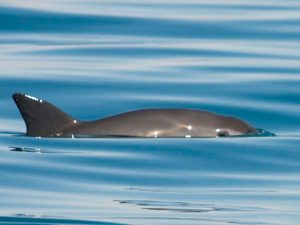
The long-tailed planigale is going to steal this ring and wear it as a belt:
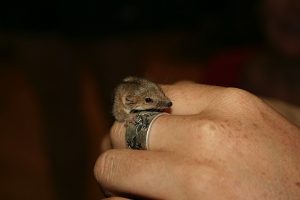
He höwl:
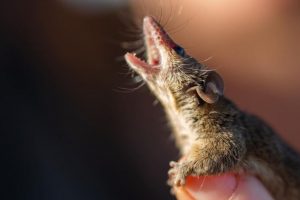
A pygmy hippo and its mother will sample this grass:
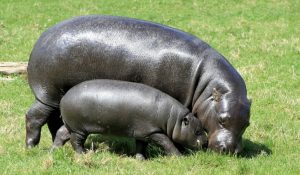
This Virgin Islands dwarf gecko will spend this dime if it can just pick it up:
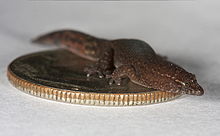
Show transcript:
Welcome to Strange Animals Podcast. I’m your host, Kate Shaw.
I talk a lot about biggest animals on this podcast, so maybe it’s time to look at the very smallest animals. I don’t mean algae or bacteria or things like that, I mean the smallest species of animals that aren’t usually considered especially small.
We’ll start with the smolest snek, the Barbados threadsnake. It only lives on a few islands in the Caribbean, notably Barbados. The very largest individual ever measured was only 4.09 inches long, or 10.4 cm, but most are under four inches long. But it’s an extremely thin snake, not much thicker than a spaghetti noodle.
The Barbados threadsnake mostly eats termites and ant larvae. It spends most of its time in leaf litter or under rocks, hunting for food. The female only lays one single egg, but the baby is relatively large, about half the mother’s length when it hatches.
That’s so cute. Why are small things so cute?
Remember the starfish episode where we talked about the largest starfish? Well, what’s the smallest starfish? That would be Parvulastra parvivipara, which is smaller than a fingernail decoration sticker. It grows to about ten millimeters across and is orangey-yellow in color. It lives on the coast of Tasmania in rock pools between low and high tide, called intertidal rock pools.
If you remember the Mangrove killifish from a few episodes ago, you’ll remember how killifish females are hermaphrodites that produce both eggs and sperm, and usually self-fertilize their eggs to produce tiny clones of themselves. Well, Parvulastra does that too, although like the killifish it probably doesn’t always self-fertilize its eggs. But then it does something interesting for a starfish. Instead of releasing its eggs into the water to develop by themselves, Parvulastra keeps the eggs inside its body. And instead of the eggs hatching into larvae, they hatch into impossibly tiny miniature baby starfish, which the parent keeps inside its body until the baby is big enough to survive safely on its own.
But what do the baby starfish eat while they’re still inside the mother? Well, they eat their SIBLINGS. The larger babies eat the smaller ones, and eventually leave through one of the openings in the parent’s body wall, called gonopores. Researchers theorize that one of the reasons the babies leave the parent is to escape being eaten by its siblings. And yes, occasionally a baby grows so big that it won’t fit through the gonopores. So it just goes on living inside the parent.
Next, let’s look at the smallest primate. The primate order includes humans, apes, monkeys, and a lot of other animals, including lemurs. And the very smallest one is Berthe’s mouse lemur. Its body is only 3.6 inches long on average, or 9.2 cm, with a tail that more than doubles its length. Its fur is yellowish and brownish-red.
Berthe’s mouse lemur was only discovered in 1992. It lives in one tiny area of western Madagascar, where it lives in trees, which means it’s vulnerable to the deforestation going on all over Madagascar and is considered endangered.
It mostly eats insects, but also fruit, flowers, and small animals of various kinds. Its habitat overlaps with another small primate, the gray mouse lemur, but they avoid each other. Madagascar has 24 known mouse lemur species and they all seem to get along well by avoiding each other and eating slightly different diets. Researchers discover new species all the time, including three in 2016.
Last October we had an episode about bats, specifically macrobats that have wingspans as broad as eagles’. But the smallest bat is called the bumblebee bat. It’s also called Kitti’s hog-nosed bat, but bumblebee bat is way cuter. It’s a microbat that lives in western Thailand and southeast Myanmar, and like other microbats it uses echolocation to find and catch flying insects. Its body is only about an inch long, or maybe 30 millimeters, although it has a respectable wingspan of about 6 ½ inches, or 17 cm. It’s reddish-brown in color with a little pig-like snoot, and it only weighs two grams. That’s just a tad more than a single Pringle chip weighs.
Because the bumblebee bat is so rare and lives in such remote areas, we don’t know a whole lot about it. It was only discovered in 1974 and is increasingly endangered due to habitat loss, since it’s only been found in 35 caves in Thailand and 8 in Myanmar, and those are often disturbed by people entering them. The land around the caves is burned every year to clear brush for farming, which affects the bats too.
The bumblebee bat roosts in caves during the day and most of the night, only flying out at dawn and dusk to catch insects. It rarely flies more than about a kilometer from its cave, or a little over half a mile, but it does migrate from one cave to another seasonally. Females give birth to one tiny baby a year. Oh my gosh, tiny baby bats.
So what about whales and dolphins? You know, some of the biggest animals in Earth’s history? Well, the vaquita is a species of porpoise that lives in the Gulf of California, and it only grows about four and a half feet long, or 1.4 meters. Like other porpoises, it uses echolocation to navigate and catch its prey. It eats small fish, squid, crustaceans, and other small animals.
The vaquita is usually solitary and spends very little time at the surface of the water, so it’s hard to spot and not a lot is known about it. It mostly lives in shallow water and it especially likes lagoons with murky water, properly called turbid water, since it attracts more small animals.
Unfortunately, the vaquita is critically endangered, mostly because it often gets trapped in illegal gillnets and drowns. The gillnets are set to catch a different critically endangered animal, a fish called the totoaba. The totoaba is larger than the vaquita and is caught for its swim bladder, which is considered a delicacy in China and is exported on the black market. The vaquita’s total population may be no more than ten animals at this point, fifteen at the most, and the illegal gillnets are still drowning them, so it may be extinct within a few years. A captive breeding plan was tried in 2017, but porpoises don’t do well in captivity and the individuals the group caught all died. Hope isn’t lost, though, because vaquita females are still having healthy babies, and there are conservation groups patrolling the part of the Gulf of California where they live to remove gill nets and chase off fishing boats trying to set more of the nets.
If you want to learn a little more about the vaquita and how to help it, episode 75 of Corbin Maxey’s excellent podcast Animals to the Max is an interview with a vaquita expert. I’ll put a link in the show notes.
Next, let’s talk about an animal that is not in danger of extinction. Please! The long-tailed planigale is doing just fine, a common marsupial from Australia. So, if it’s a marsupial, it must be pretty big—like kangaroos and wallabies. Right? Nope, the long-tailed planigale is the size of a mouse, which it somewhat resembles. It even has a long tail that’s bare of fur. It grows to 2 ½ inches long not counting its tail, or 6.5 cm. It’s brown with longer hind legs than forelegs so it often sits up like a tiny squirrel. Its nose is pointed and it has little round mouse-like ears. But it has a weird skull.
The long-tailed planigale’s skull is flattened—in fact, it’s no more than 4 mm top to bottom. This helps it squeeze into cracks in the dry ground, where it hunts insects and other small animals, and hides from predators.
The pygmy hippopotamus is a real animal, which I did not know until recently. It grows about half the height of the common hippo and only weighs about a quarter as much. It’s just over three feet tall at the shoulder, or 100 cm. It’s black or brown in color and spends most of its time in shallow water, usually rivers. It’s sometimes seen resting in burrows along river banks, but no one’s sure if it digs these burrows or makes use of burrows dug by other animals. It comes out of the water at night to find food. Its nostrils and eyes are smaller than the common hippo’s.
Unlike the common hippo, the pygmy hippo lives in deep forests and as a result, mostly eats ferns, fruit, and various leaves. Common hippos eat more grass and water plants. The pygmy hippo seems to be less aggressive than the common hippo, but it also shares some behaviors with its larger cousins. For instance, the pooping thing. If you haven’t listened to the Varmints! Episode about hippos, you owe it to yourself to do so because it’s hilarious. I’ll put a link in the show notes to that one too. While the hippo poops, it wags its little tail really fast to spread the poop out across a larger distance.
Also like the common hippo, the pygmy hippo secretes a reddish substance that looks like blood. It’s actually called hipposudoric acid, which researchers thinks acts as a sunscreen and an antiseptic. Hippos have delicate skin with almost no hair, so its skin dries out and cracks when it’s out of water too long.
The pygmy hippo is endangered in the wild due to habitat loss and poaching, but fortunately it breeds successfully in zoos and lives a long time, up to about 55 years in captivity. For some reason females are much more likely to be born in captivity, so when a male baby is born it’s a big deal for the captive breeding program. I’ll put a link in the show notes to a video where you can watch a baby pygmy hippo named Sapo and his mother. He’s adorable.
Finally, let’s finish where we started, with another reptile. The smallest lizard is a gecko, although there are a lot of small geckos out there and it’s a toss-up which one is actually smallest on average. Let’s go with the Virgin Islands dwarf gecko, which lives on three of the British Virgin Islands. It’s closely related to the other contender for smallest reptile, the dwarf sphaero from Puerto Rico, which is a nearby island, but while that gecko is just a shade shorter on average, it’s much heavier.
The Virgin Islands dwarf gecko is only 18 mm long not counting its tail, and it weighs .15 grams. A paperclip weighs more than this gecko. It’s brown with darker speckles and a yellow stripe behind the eyes. Females are usually slightly larger than males. Like other geckos, it can lose its tail once and regrow a little stump of a tail.
The Virgin Islands dwarf gecko lives in dry forests and especially likes rocky hills, where it spends a lot of its time hunting for tiny animals under rocks. We don’t know a whole lot about it, but it does seem to be rare and only lives in a few places, so it’s considered endangered. In 2011 some rich guy decided he was going to release a bunch of lemurs from Madagascar onto Moskito Island, one of the islands where the dwarf gecko lives. Every conservationist ever told him oh NO you don’t, rich man, what is your problem? Those lemurs will destroy the island’s delicate ecosystem, drive the dwarf gecko and many other species to extinction, and then die because the habitat is all wrong for lemurs. So Mr. Rich Man said fine, whatever, I’ll take my lemurs and go home. And he did, and the dwarf gecko was saved.
Look, if you have so much money that you’re making plans to move lemurs halfway across the world because you think it’s a good idea, I can help take some of that money off your hands.
You can find Strange Animals Podcast online at strangeanimalspodcast.blubrry.net. That’s blueberry without any E’s. If you have questions, comments, or suggestions for future episodes, email us at strangeanimalspodcast@gmail.com. We also have a Patreon if you’d like to support us that way.
Thanks for listening!